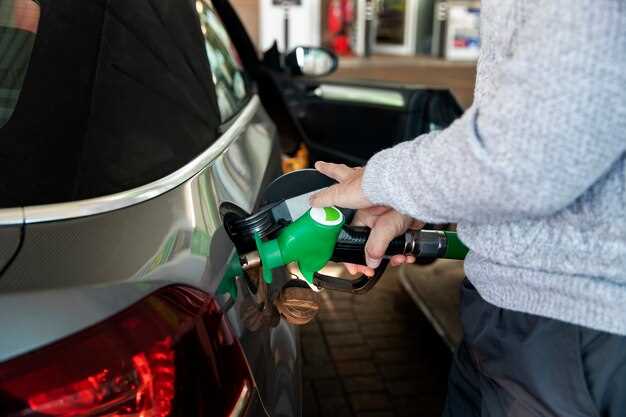
Vintage cars possess a charm and character that modern vehicles often lack, but maintaining their intricate systems can be a challenge. Among the various components of a classic automobile, the fuel system is critical to ensure optimal performance and reliability. As these cars age, fuel system problems can arise, leading to decreased efficiency and potential breakdowns. Understanding how to troubleshoot these issues is essential for any classic car enthusiast.
The fuel system in vintage cars typically comprises several key components, including the fuel tank, fuel lines, fuel pump, carburetor, and filters. Over time, these parts can suffer from wear and tear, leading to common problems such as fuel leaks, clogs, or vapor lock. To effectively address these issues, one must engage in thorough troubleshooting to identify the root cause and implement the necessary repairs or replacements.
Common symptoms of a malfunctioning fuel system include difficulty starting the engine, poor acceleration, or stalling during operation. By following a systematic approach to troubleshooting, owners can diagnose issues ranging from fuel contamination to electrical failures in the fuel pump. This article will provide a step-by-step guide to help you effectively navigate through the complexities of your vintage car’s fuel system, ensuring you can enjoy the unique driving experience these classic vehicles offer.
Identifying Common Fuel System Issues in Classic Vehicles
The fuel system in classic vehicles plays a crucial role in ensuring optimal performance and reliability. However, due to age and wear, these systems can encounter various problems. Early identification of these issues is essential for effective troubleshooting.
One of the most common issues is clogged fuel filters. Over time, debris and sediment accumulate, restricting fuel flow and causing performance issues. If the engine hesitates or stalls during acceleration, inspecting and replacing the fuel filter may resolve the problem.
Fuel pump failure is another frequent concern. Classic vehicles often use mechanical fuel pumps that can wear out over time. Symptoms of a failing pump include difficulty starting the engine or an erratic fuel supply. Testing the pump’s output pressure and ensuring it meets manufacturer specifications is essential for troubleshooting.
Carburetor problems also arise in vintage cars with carbureted systems. Issues such as leaking gaskets, blocked jets, or incorrect float levels can lead to poor fuel delivery. Cleaning the carburetor and checking the integrity of its components can significantly improve engine performance.
Additionally, fuel line leaks pose a safety risk and can lead to diminished efficiency. Visually inspecting the fuel lines for signs of wear, corrosion, or cracks is necessary. Any leakage must be repaired promptly to prevent fire hazards and further damage to the fuel system.
Another issue involves fuel quality. Storing fuel for long periods can lead to deterioration, causing varnish buildup in the system. Using fresh fuel and adding a fuel stabilizer can help mitigate this problem, ensuring the fuel system runs smoothly.
In conclusion, identifying these common fuel system issues in classic vehicles requires careful observation and basic troubleshooting skills. Addressing these problems promptly can enhance the performance and longevity of vintage automobiles.
Step-by-Step Guide to Diagnosing Fuel Pump Failures

Diagnosing fuel pump failures in vintage cars requires a systematic approach to identify issues within the fuel system. Follow these steps to effectively pinpoint problems.
Step 1: Initial Assessment – Begin by observing the symptoms. Common signs of a failing fuel pump include engine stalling, difficulty starting, or decreased power during acceleration. Listen for unusual noises from the fuel tank when the ignition is turned on, such as buzzing or whining sounds.
Step 2: Check Fuel Level – Ensure there is sufficient fuel in the tank. A low fuel level can mimic fuel pump failure. If necessary, add fuel and attempt to start the engine again.
Step 3: Inspect Fuel Pump Relay and Fuses – Locate the fuel pump relay and associated fuses. A faulty relay or blown fuse can disrupt power to the fuel pump. Replace any damaged components and retest the system.
Step 4: Test Electrical Connections – Examine the wiring and connectors leading to the fuel pump. Look for corrosion, loose connections, or damaged wires. Use a multimeter to check for continuity and proper voltage reaching the pump.
Step 5: Pressure Test the Fuel System – Connect a fuel pressure gauge to the fuel line. Verify that the readings align with the manufacturer’s specifications. Low pressure indicates a possible pump failure or blockage in the fuel filter.
Step 6: Inspect the Fuel Filter – A clogged fuel filter can restrict fuel flow, making it appear as though the pump is failing. Replace the filter if necessary and check for any debris or contamination in the system.
Step 7: Directly Test the Fuel Pump – If previous steps do not reveal the issue, consider testing the fuel pump directly. Disconnect the pump from the fuel line and power it externally using a battery. If the pump does not operate, it is likely faulty and needs replacement.
Step 8: Replacement and Reassembly – If a failure is confirmed, replace the fuel pump with a compatible unit. Reassemble all components and ensure proper connections. Always follow the manufacturer’s specifications for installation.
Step 9: Final System Check – After replacement, perform a final assessment by starting the engine and observing its performance. Check for any leaks, irregular sounds, or pressure discrepancies in the fuel system.
By following this guide, you can effectively diagnose and address fuel pump issues in vintage cars, ensuring a reliable and efficient fuel system.
Restoration Techniques for Clogged Carburetors in Older Cars

Clogged carburetors can significantly impair the fuel system’s performance in vintage cars, leading to various driving issues. Effective restoration techniques are essential to restore optimal functionality. The first step involves removing the carburetor from the engine, which provides easier access for thorough cleaning.
Once removed, disassemble the carburetor carefully, taking note of the arrangement of parts to ensure correct reassembly. Pay particular attention to the jets, float chamber, and needle valve. These components are often the culprits in clogging and require meticulous examination.
To clean the carburetor, use a carburetor cleaning solution specifically designed to break down fuel deposits and varnish. Submerge the disassembled parts in the solution and allow them to soak for the recommended duration. Scrubbing with a soft brush can help dislodge stubborn buildup without damaging the components.
After soaking and scrubbing, rinse each part thoroughly with solvent and dry them completely. Be sure to inspect the gaskets for wear or damage; replacing them can prevent future fuel system leaks. Reassemble the carburetor, ensuring that all components are correctly aligned and secured.
Before reinstalling the carburetor, check the fuel lines and filters for blockages or deterioration. Clear any debris and replace aged fuel lines to maintain an effective fuel flow. Once everything is clear, reinstall the carburetor, ensuring that all connections are tight and leak-free.
Finally, adjust the carburetor settings as needed and test the vehicle to confirm that the fuel system operates smoothly. Proper maintenance and periodic inspections can prevent clogging and extend the life of carburetors in vintage cars.




